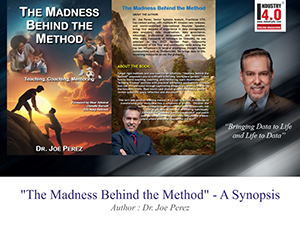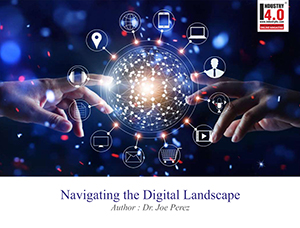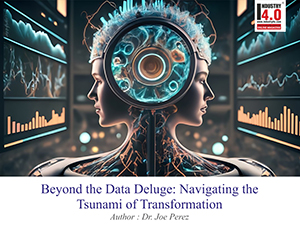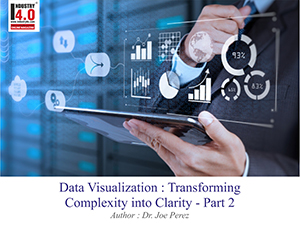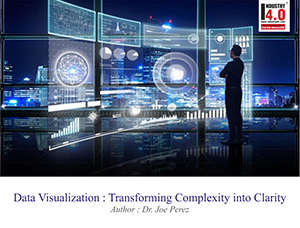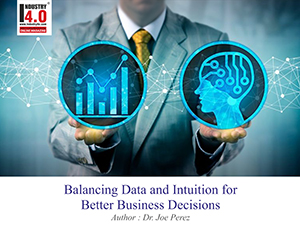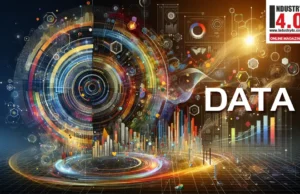From Data Deluge to Predictive Power : Mastering Data
Mining, Extraction, and Model Evaluation
Data, the all-pervasive source driving the era of digitalization, possesses boundless possibilities for revealing valuable insights and influencing well-informed decision-making. The fundamental pillars of data analytics, data mining and extraction, equip us with the ability to plunge into this expansive realm of information, unveil concealed patterns, and convert unprocessed data into practical knowledge.
 Embarking on a journey to enhance your data mining and data extraction skills opens a myriad of possibilities in the field of data analytics. By navigating through diverse case studies, engaging in hands-on exploration, and actively participating in collaborative learning communities, you can refine your techniques, broaden your knowledge base, and evolve into a proficient data mining and extraction expert.
Embarking on a journey to enhance your data mining and data extraction skills opens a myriad of possibilities in the field of data analytics. By navigating through diverse case studies, engaging in hands-on exploration, and actively participating in collaborative learning communities, you can refine your techniques, broaden your knowledge base, and evolve into a proficient data mining and extraction expert.
Centuries before modern data analytics tools were developed, ancient Indian civilizations such as the Mauryan Empire grappled with the difficult task of forecasting floods, which was essential for agricultural planning and disaster readiness. Their innovative approach involved thorough data gathering and analysis, showcasing their remarkable ingenuity.
Along the banks of the Ganges and Indus rivers, ancient civilizations developed intricate gauge networks to measure water levels and flow rates. Diligent observers meticulously recorded these measurements over long periods, documenting seasonal variations and patterns. This valuable collection of historical data formed the basis of their flood prediction system. Through careful analysis of past trends and identification of recurring patterns, these early data analysts were able to predict potential floods with astonishing accuracy, allowing communities to prepare and mitigate risks. The remarkable achievement of these ancient civilizations, accomplished without the aid of modern computational tools, is a testament to their resourcefulness and determination.
In addition to this account, the ancient Indian society was profoundly influenced by two significant cultural and intellectual currents—the Vedas and the Harappan Civilization. The Vedas stand as the oldest scriptures of Hinduism, encompassing hymns, rituals, and philosophical insights. Over time, Vedic ritualism, a fusion of ancient Indo-Aryan and Harappan culture, contributed to the deities and traditions of Hinduism. Simultaneously, the Harappan Civilization (also referred to as the Indus Valley Civilization) flourished from around 3300 BC to 1300 BC. It spanned from present-day northeast Afghanistan to Pakistan and northwest India. This civilization introduced advancements such as standardized weights and measures, seal carving, and metallurgy involving copper, bronze, lead, and tin. The civilization’s roots can be traced back to settlements like Mehrgarh in Balochistan (western Pakistan) as early as 7000 BC.
This historical example underscores the enduring power of data mining and extraction. Even without sophisticated algorithms, the systematic collection, analysis, and interpretation of data empowered these ancient civilizations to make informed decisions and thrive in a dynamic environment. Relying on empirical evidence and astute observations, they established the basis for comprehending hydrological systems, water control, and disaster preparedness. Fast-forward to today, where modern data science and AI algorithms continue this tradition, providing us with tools to predict and mitigate natural disasters, just as our ancient predecessors did along the banks of those ancient rivers.
Diverse Case Studies:
Beyond the theoretical understanding gleaned from textbooks and tutorials, immersing yourself in a multitude of real-world case studies is an invaluable step in your learning journey. Explore case studies encompassing various industries, from e-commerce giants personalizing customer recommendations to financial institutions identifying fraudulent transactions. Each case study presents a unique puzzle, showcasing the diverse applications of data mining and extraction techniques across different domains. By dissecting these case studies, you’ll gain insights into the specific challenges faced, the data sources utilized, and the methodologies employed by seasoned professionals to extract valuable insights. This exposure to practical scenarios equips you with a broader perspective and empowers you to adapt your approach to tackling diverse data mining problems.
Hands-On Exploration and Experimentation:
Theoretical knowledge finds its true meaning through practical application. The realm of data mining and extraction thrives on hands-on exploration and experimentation. Leverage the power of open-source tools and platforms specifically designed for data mining and extraction, such as Python’s Scikit-learn library or R’s powerful data manipulation capabilities. Apply these tools to analyze real-world datasets across various domains, from finance and healthcare to retail and cybersecurity. As you experiment with different techniques and algorithms, you’ll gain a deeper understanding of their strengths and limitations, fostering a nuanced appreciation for the intricacies of data mining and extraction methodologies. Remember, the more you experiment, the more you refine your skills and develop the intuition necessary to effectively navigate the ever-evolving landscape of data analysis.
Collaborative Learning and Knowledge Sharing:
The data analytics community thrives on a spirit of collaboration and knowledge sharing. Actively participate in online forums, discussion groups, and data science communities to connect with like-minded professionals, exchange ideas, and learn from diverse perspectives. Engage in peer-reviewed data mining challenges or collaborative projects to push your boundaries and gain exposure to cutting-edge methodologies and innovative approaches. By actively contributing to this vibrant ecosystem of knowledge exchange, you’ll not only solidify your own understanding but also contribute to the collective advancement of the field. Remember, the journey towards data mining and extraction mastery is a continuous one, fueled by the collective efforts and shared knowledge of the data analytics community.
Once you have perfected your data mining and extraction abilities, the next essential stage in your data analytics adventure is to assess the predictive capabilities of your models. This pivotal step guarantees that the knowledge obtained from your data can be transformed into practical and trustworthy forecasts. Through thorough evaluation of model precision, performance indicators, and the delicate equilibrium between bias and variance, you can guarantee that your models are not just precise but also applicable to unforeseen data situations.
Assessing the accuracy of a model is an essential step in ensuring precision and dependability in predictive analytics. Presented here is a strategic approach to evaluate predictive analytics models:
Comprehensive Cross-Validation:
Take a voyage into a thorough cross-validation process to examine the effectiveness of your model in different datasets. Employ methods like k-fold cross-validation or leave-one-out cross-validation to repeatedly divide your data into training and testing sets. By meticulously validating your model against various subsets of the data, you can assess its strength and ability to apply to different situations and sample distributions.
Performance Metrics Mastery:
Dive deep into the world of performance metrics to gain nuanced insights into your predictive analytics model’s accuracy. Explore a plethora of metrics, including but not limited to accuracy, precision, recall, F1-score, and area under the receiver operating characteristic curve (AUC-ROC). Each metric offers a unique perspective on your model’s performance, enabling you to identify its strengths and limitations across different prediction tasks and class distributions.
Bias-Variance Tradeoff Analysis:
Explore the complex landscape of the bias-variance tradeoff to achieve an ideal equilibrium between model complexity and generalization. Evaluate the interaction between bias, which reflects the model’s capacity to capture underlying patterns, and variance, which indicates its susceptibility to fluctuations in the training data. By visualizing the bias-variance tradeoff using learning curves or validation curves, you can optimize model hyperparameters and alleviate overfitting or underfitting tendencies.
Example Scenario:
Imagine you’re tasked with evaluating the accuracy of a predictive analytics model designed to forecast customer churn for a telecommunications company. Employing comprehensive cross-validation techniques, you partition the historical customer data into training and testing sets across multiple iterations. Through meticulous analysis of performance metrics such as precision, recall, and AUC-ROC, you unearth actionable insights into the model’s predictive prowess.
As you plunge the depths even further in this scenario, you embark on a journey of bias-variance tradeoff analysis to strike an optimal equilibrium between model complexity and predictive accuracy. By fine-tuning key hyperparameters and optimizing feature selection strategies, you sculpt a predictive analytics model that strikes a delicate balance between capturing intricate patterns in customer behavior and generalizing to unseen data.
Conclusion: From Ancient Wisdom to Modern Precision
Just as the ancient Indian civilization leveraged meticulous data collection and analysis to predict floods with remarkable accuracy, the journey of data mining and extraction in the modern era empowers us to extract valuable insights and build robust predictive models. By mastering the art of data mining and extraction, coupled with a rigorous approach to model evaluation, we can transform raw data into actionable knowledge, shaping informed decision-making and driving innovation across diverse industries.
In the words of Sir C. V. Raman, the eminent Indian physicist who received the Nobel Prize for Physics in 1930 for his groundbreaking work on light scattering (known as the “Raman Effect”), we find a delightful twist on our data-driven world: “Data, data everywhere, but not a byte to eat.” This playful adaptation of Samuel Taylor Coleridge’s famous line reminds us that having access to vast amounts of data is meaningless without the ability to extract meaningful insights.
As we navigate the digital landscape, we stand at the intersection of ancient wisdom and cutting-edge technology. Our ability to mine data, evaluate models, and derive actionable knowledge mirrors the process of a skilled artisan transforming raw materials into a masterpiece. Just as the ancient seers observed the signs of impending floods, we now decipher patterns hidden within data streams, shaping them into innovations that propel us towards a brighter future.
So, let’s proceed on this expedition, equipped with data, driven by curiosity, and inspired by visionaries like Sir C. V. Raman. Together, we will forge ahead, transforming raw information into the energy that fuels informed decision-making and propels progress in our constantly evolving world.
“Bringing Data to Life and Life to Data”

Dr. Joe Perez,
Team Lead / Senior Systems Analyst,
NC Department of Health and Human Services
Dr. Joe Perez ( Dr.Joe ) is also the Chief Technology Officer – CogniMind
To book Dr. Joe Perez for your speaking engagement please click here
Dr. Joe Perez was selected as the 2023 Gartner Peer Community Ambassador of the Year.
Dr. Joe Perez is a truly exceptional professional who has left an indelible mark on the IT, health and human services, and higher education sectors. His journey began in the field of education, where he laid the foundation for his career. With advanced degrees in education and a doctorate that included a double minor in computers and theology, Joe embarked on a path that ultimately led him to the dynamic world of data-driven Information Technology.
In the early 1990s, he transitioned into IT, starting as a Computer Consultant at NC State University. Over the years, his dedication and expertise led to a series of well-deserved promotions, culminating in his role as Business Intelligence Specialist that capped his 25 successful years at NC State. Not one to rest on his laurels, Dr. Perez embarked on a new challenge in the fall of 2017, when he was recruited to take on the role of Senior Business Analyst at the NC Department of Health & Human Services (DHHS). His impressive journey continued with promotions to Senior Systems Analyst and Team Leader, showcasing his versatility and leadership capabilities.
In addition to his full-time responsibilities at DHHS, Joe assumed the role of fractional Chief Technology Officer at a North Carolina corporation in October 2020. A top-ranked published author with over 17,000 followers on LinkedIn and numerous professional certifications, he is a highly sought-after international keynote speaker, a recognized expert in data analytics and visualization, and a specialist in efficiency and process improvement.
Dr. Perez’s contributions have not gone unnoticed. He is a recipient of the IOT Industry Insights 2021 Thought Leader of the Year award and has been acknowledged as a LinkedIn Top Voice in multiple topics. He holds memberships in prestigious Thought Leader communities at Gartner, Coruzant Technologies, DataManagementU, Engatica, the Global AI Hub, and Thinkers360 (where he achieved overall Top 20 Thought Leader 2023 ranking in both Analytics and Big Data). His reach extends to more than twenty countries worldwide, where he impacts thousands through his speaking engagements.
Beyond his professional achievements, Joe’s passion for teaching remains undiminished. Whether as a speaker, workshop facilitator, podcast guest, conference emcee, or team leader, he continually inspires individuals to strive for excellence. He treasures his time with his family and is a gifted musician, singer, pianist, and composer. Joe also dedicates his skills as a speaker, interpreter, and music director to his church’s Hispanic ministry. He manages the publication of a widely recognized monthly military newsletter, The Patriot News, and is deeply committed to his community.
To maintain a balanced life, Perez is a regular at the gym, and he finds relaxation in watching Star Trek reruns. He lives by the philosophy that innovation is the key to progress, and he approaches each day with boundless energy and an unwavering commitment to excellence. His journey is a testament to the remarkable achievements of a truly exceptional individual.
Dr. Joe Perez is Accorded with the following Honors & Awards :
https://www.linkedin.com/in/jw
Dr. Joe Perez is Bestowed with the following Licences,Certifications & Badge:
https://www.linkedin.com/in/jw
https://www.thinkers360.com/tl
Dr.Joe Perez is Voluentering in the following International Industry Associations & Institutions :
https://www.linkedin.com/in/jw
Dr.Joe Perez can be contacted at :
E-mail | LinkedIn | Web | Sessionize | FaceBook | Twitter | YouTube
Also read Dr.Joe Perez‘s earlier article:







